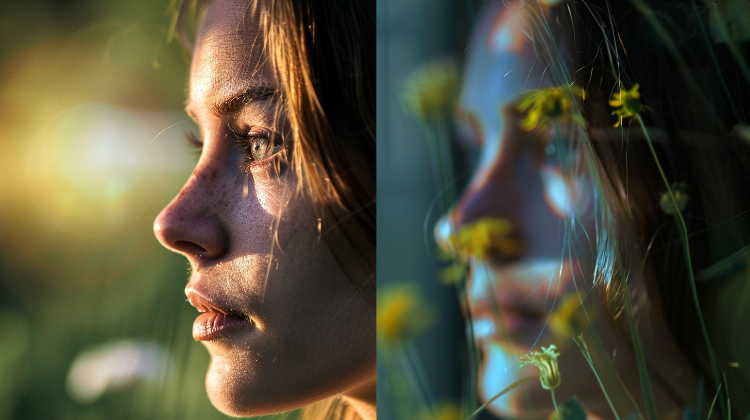Understanding Depth of Field: Why Every Photographer Needs a Calculator
Have you ever wondered why some photos have that dreamy, blurred background while others keep everything sharp from front to back? The answer lies in understanding depth of field (DOF), and a depth of field calculator is your secret weapon for achieving perfect focus every time.
Depth of field refers to the zone of acceptable sharpness in your image, extending in front of and behind your main subject. Whether you're shooting portraits with creamy bokeh or landscapes with edge-to-edge sharpness, mastering DOF control separates amateur snapshots from professional photographs.

What Is a Depth of Field Calculator and How Does It Work?
A depth of field calculator is a specialized tool that predicts exactly how much of your image will be in sharp focus based on your camera settings. By inputting your focal length, aperture, subject distance, and sensor size, the calculator uses optical formulas to determine your near focus limit, far focus limit, and total depth of field.
The calculations are based on the circle of confusion (CoC), which defines the maximum blur spot that still appears acceptably sharp to the human eye. Different sensor sizes have different CoC values—full-frame cameras use 0.029mm, while APS-C sensors use approximately 0.019-0.020mm.
Understanding these technical aspects might seem overwhelming, but that's precisely why a depth of field calculator is invaluable. Instead of doing complex math in your head during a shoot, you can quickly input your settings and get instant, accurate results. This is particularly helpful when planning shoots for landscape photography where maximizing sharpness is crucial.

The Four Key Factors That Control Your Depth of Field
Aperture: Your Primary DOF Control
Aperture (f-stop) is the most powerful tool for controlling depth of field. A wide aperture like f/1.8 or f/2.8 creates a shallow DOF with beautiful background blur—perfect for portraits and isolating subjects. Conversely, a narrow aperture like f/11 or f/16 extends the depth of field, keeping more of the scene in focus.
The relationship is inverse: smaller f-numbers equal larger aperture openings and shallower DOF. According to Photography Life, aperture has the most dramatic impact on depth of field among all camera settings.
Focal Length: Magnification Matters
Longer focal lengths compress depth of field. A 200mm telephoto lens produces much shallower DOF than a 24mm wide-angle at the same aperture and distance. This is why portrait photographers love 85mm and 135mm lenses—they naturally create pleasing background separation.
Understanding focal length examples helps you choose the right lens for achieving your desired look.
Distance to Subject: The Closer, The Shallower
As you move closer to your subject, depth of field decreases dramatically. This is particularly relevant for macro photography, where working distances are measured in centimeters and DOF might be just millimeters thick—even at narrow apertures.
Sensor Size: The Format Factor
Larger sensors produce shallower depth of field at equivalent framing and aperture. A full-frame camera at f/2.8 will have less DOF than an APS-C or Micro Four Thirds camera at the same settings, due to the different circle of confusion values and focal length requirements for equivalent framing.
How to Use a Depth of Field Calculator for Different Photography Genres
Portrait Photography: Achieving Creamy Bokeh
For portrait work, most photographers aim for shallow depth of field to separate their subject from distracting backgrounds. Using a depth of field calculator, you can determine the exact settings needed to keep eyes sharp while blurring everything else.
Typical portrait settings might be: 85mm focal length, f/2.8 aperture, 3 meters subject distance on a full-frame sensor. The calculator will show you have approximately 10-15cm of sharp focus—perfect for facial features while melting the background into smooth bokeh.
Landscape Photography: Maximizing Sharpness
Landscape photographers need the opposite approach—they want everything from foreground flowers to distant mountains in sharp focus. This is where the hyperfocal distance becomes critical.
The hyperfocal distance is the focus point where everything from half that distance to infinity appears acceptably sharp. According to Cambridge in Colour, focusing at the hyperfocal distance maximizes depth of field efficiency.
For a 24mm lens at f/11 on full-frame, the hyperfocal distance might be 1.5 meters. Focus there, and everything from 0.75 meters to infinity stays sharp—exactly what landscape photographers need.
Macro Photography: Working with Ultra-Thin DOF
Macro photographers face unique challenges. At 1:1 magnification with a 100mm macro lens at f/16, you might have less than 1cm of depth of field. A depth of field calculator becomes essential for determining whether you need focus stacking to achieve the sharpness you want.
Understanding these extremes helps you plan your shooting strategy before arriving at your location.

Practical Tips for Using Your Depth of Field Calculator
Start by measuring your working distance accurately. Use your camera's focus distance indicator or a tape measure for precise results. Small distance errors significantly affect DOF calculations, especially in close-up work.
Experiment with different combinations using the calculator before your shoot. Try various aperture and focal length combinations to see how they affect your depth of field. This pre-visualization helps you pack the right lenses and plan your shooting approach.
Remember that depth of field extends approximately one-third in front of your focus point and two-thirds behind it. This 1:2 ratio helps you position your focus point optimally within the scene.
Consider environmental factors too. While calculators provide theoretical values, real-world sharpness depends on lens quality, atmospheric conditions, and subject movement. The Digital Photography School recommends adding a safety margin when critical sharpness is required.
Common Depth of Field Mistakes and How to Avoid Them
Many photographers believe that f/22 always ensures maximum sharpness throughout an image. However, diffraction begins to degrade image quality beyond f/11-f/16 on most cameras. Your depth of field calculator helps you find the sweet spot where DOF and optical quality balance perfectly.
Another common mistake is ignoring sensor size when reading advice online. Settings that work beautifully on full-frame might not translate directly to crop sensors. Always input your actual sensor size into the calculator for accurate results.
Don't forget about lens breathing—some lenses change effective focal length when focusing closer. While most calculators don't account for this, being aware helps explain small discrepancies between calculated and observed results.
Take Control of Your Photography with Precise DOF Planning
Mastering depth of field transforms your photography from guesswork to precision. A depth of field calculator empowers you to make informed creative decisions, whether you're shooting fashion portraits, sweeping vistas, or intricate macro subjects.
The beauty of digital photography is that you can experiment freely. Use the calculator to predict results, take test shots, and refine your understanding. Over time, you'll develop an intuitive sense of depth of field, but the calculator remains invaluable for critical work or unfamiliar situations.
Start using a depth of field calculator today, and watch your technical confidence soar. Your images will show the difference—from perfectly isolated subjects to landscapes with tack-sharp detail throughout. Photography is about capturing your creative vision, and understanding DOF gives you one more powerful tool to bring that vision to life.
📷 Depth of Field Calculator
Perfect for Portrait, Macro & Landscape Photography


